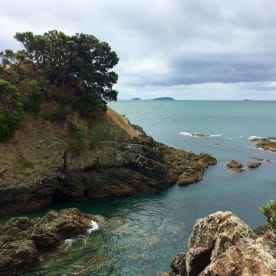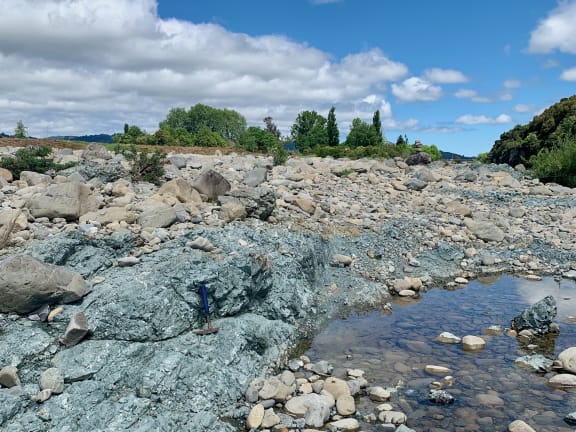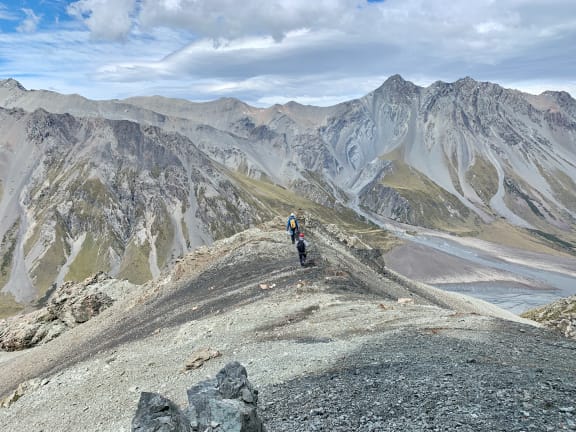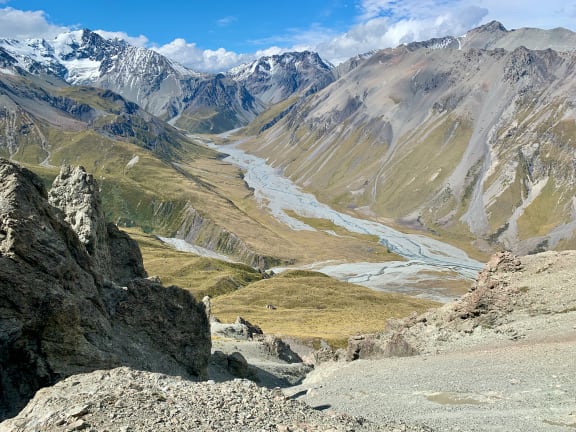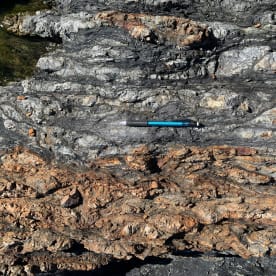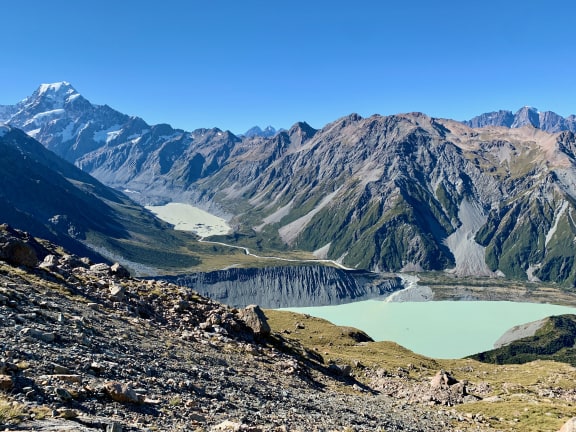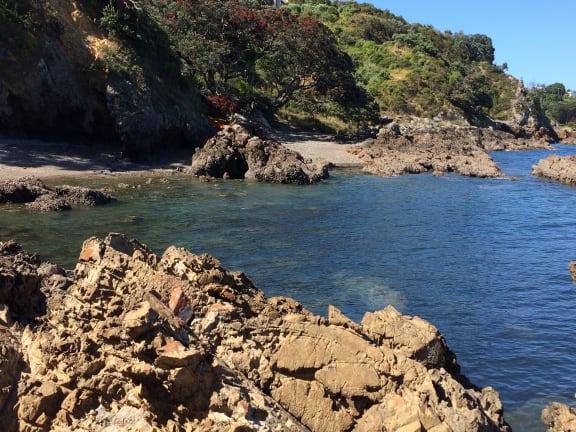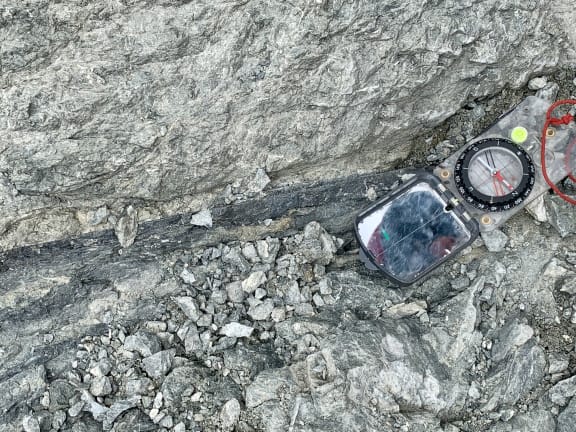Some ground-breaking research into our nation's most common type of rock is unlocking the secrets of earthquake faults.
Greywacke is a rock no-one particularly loves, but geologist Dr Carolyn Boulton is very interested in it.
Greywacke is a variety of sandstone. It's hard, dark, and has nothing shiny, pretty or particularly valuable about it.
Dr Boulton tells Kathryn Ryan she has been granted EQC-funding to look specifically at how greywacke rocks behave before, during and after earthquakes, and how faults can communicate with each other.
“Pretty much everywhere you look, there it is, you go to the beach in Wellington and you're surrounded by greywacke and pretty much everywhere else in the country. So, I thought it was high time that it got the publicity that it deserves,” she says.
So how did this ubiquitous rock get here?
“Greywacke is a series of sandstone and siltstone that was deposited on the edge of Gondwana hundreds of millions of years ago,” she says.
“And it just kept being deposited and deposited and deposited for such a long time that we just have a huge amount of it.
“And then when we broke away from Gondwana and drifted away from Australia, we just carried all that greywacke with us.”
Over its life, greywacke has endured great geological “torture”, she says.
“It's been a part of a lot of deformation, as we say, in geology. So that's maybe scarred the greywacke a little bit. It's left it with a lot of fractures and old faults and defects. It's really been through the trenches.”
Because greywacke is our most common rock, it can tell us much about earthquakes, she says.
“In the recent earthquakes in 2010, the Darfield earthquake in 2016 and the Kaikōura earthquake, these earthquakes were really surprising to us because they involved not just slips on one fault, but slips on quite a few faults, at least four in the Darfield earthquake and at least 20 in the Kaikōura earthquake.
“So, scientists were really surprised. And were like how can that happen? How can we have so many faults participate in one earthquake? Because when that happens, the earthquakes get bigger than they normally would be if [it was] just one fault.”
Her research aims to explain why.
Greywacke has a lot of pre-existing weaknesses, she says.
“It naturally has weak grains, those dark greywacke rocks are naturally weak.
“So, this provides an explanation for why once a big earthquake or reasonable-sized earthquake gets going, a lot of the other parts of the rock join in and they're eager to participate in that big earthquake event, making our earthquakes more complex.”
This understanding of greywacke changes our understanding of previous major quakes, she says. They were more complex events than first thought.
“It's really changed the way that we look, it's caused us to reexamine historical earthquakes, to also understand better the recent earthquakes that really affected us.”
Her research also aims to establish how strong greywacke is.
“That means how much they're going to resist the next earthquake, and also how much force is propelling them or pushing them to slip.”

